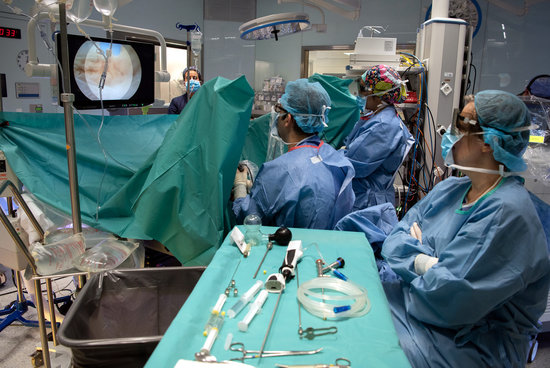Barcelona hospital first in the world to use 3D for endoscopies
Hospital Clínic tries out new technology on prostate enlargement surgery, with 23 successful operations carried out so far

Barcelona's Hospital Clínic has become the first in the world to use 3D vision for endoscopic surgery, which uses natural openings to see and perform operations inside the body.
3D technology was used for benign prostatic hyperplasia surgery, with 23 successful operations carried out by the hospital so far.
Benign prostatic hyperplasia, which is also known as prostate enlargement, is a non-cancerous increase in the size of the prostate gland.
The prevalence of the disorder increases with age, and it is estimated that half of all men suffer prostate enlargement in their sixties, with one in ten needing an operation.
The new technique allows surgeons to carry out the procedure with greater precision, less bleeding, while it also improves the patient's recovery.
"In endoscopy, we were being held back by 2D vision, which is like working with one eye covered," says the head of the hospital's Urology Service, Doctor Antonio Alcaraz.
A first for endoscopies
3D technology is used in laparoscopic surgery, through small incisions for operations in the abdominal or pelvic cavities, and in robotic surgery, but never in endoscopies.
In endoscopies, the surgeon can see inside the body by inserting a thin tube directly through openings such as the mouth or anus, or in urology through the urethra.
In order to try out these procedures with 3D technology, the Clínic hospital chose benign prostatic hyperplasia surgery, which is one of the most common operations.
After 23 successful cases, the technology is now used for all such operations, and will be presented to the medical community at the European Urology Congress in March.